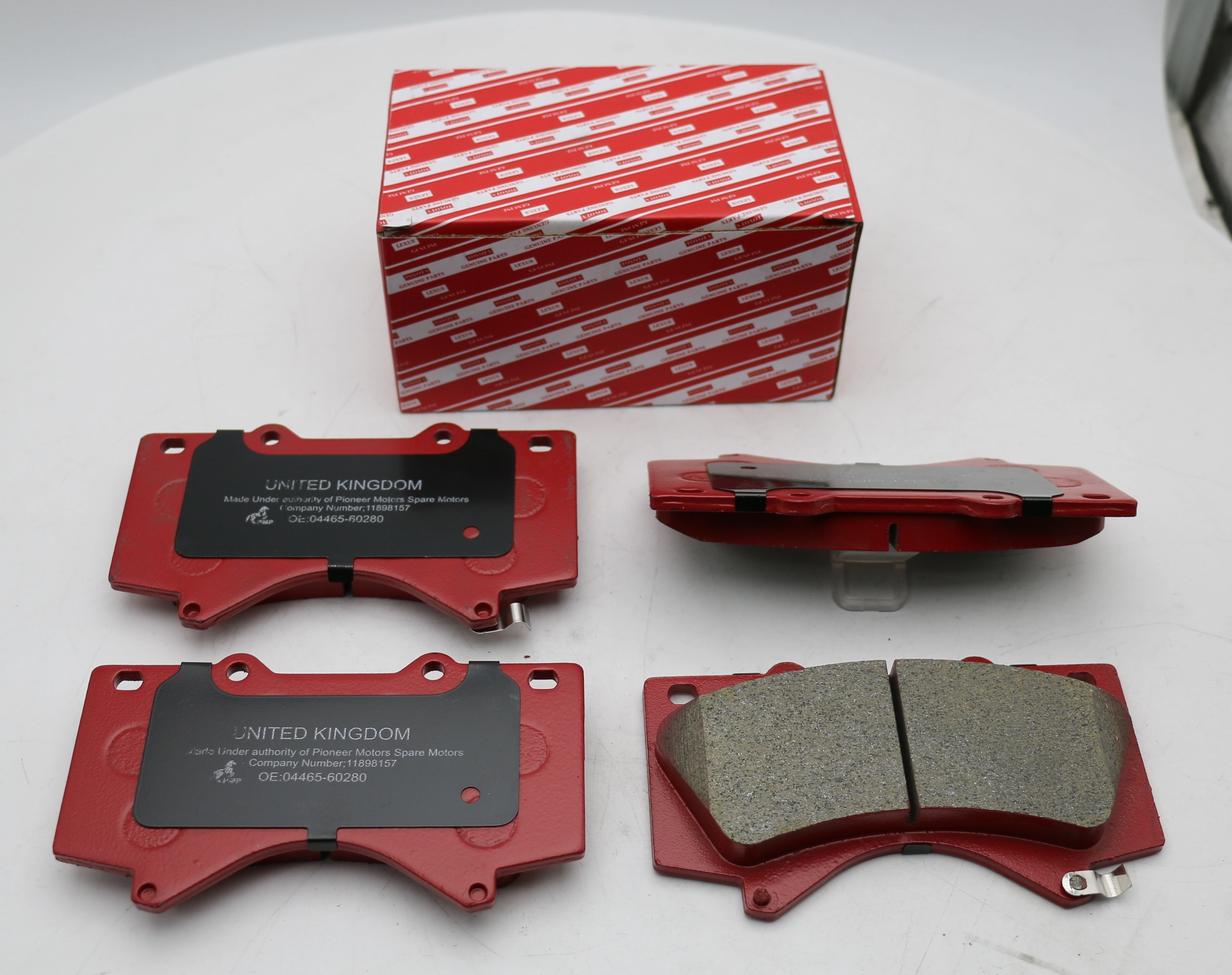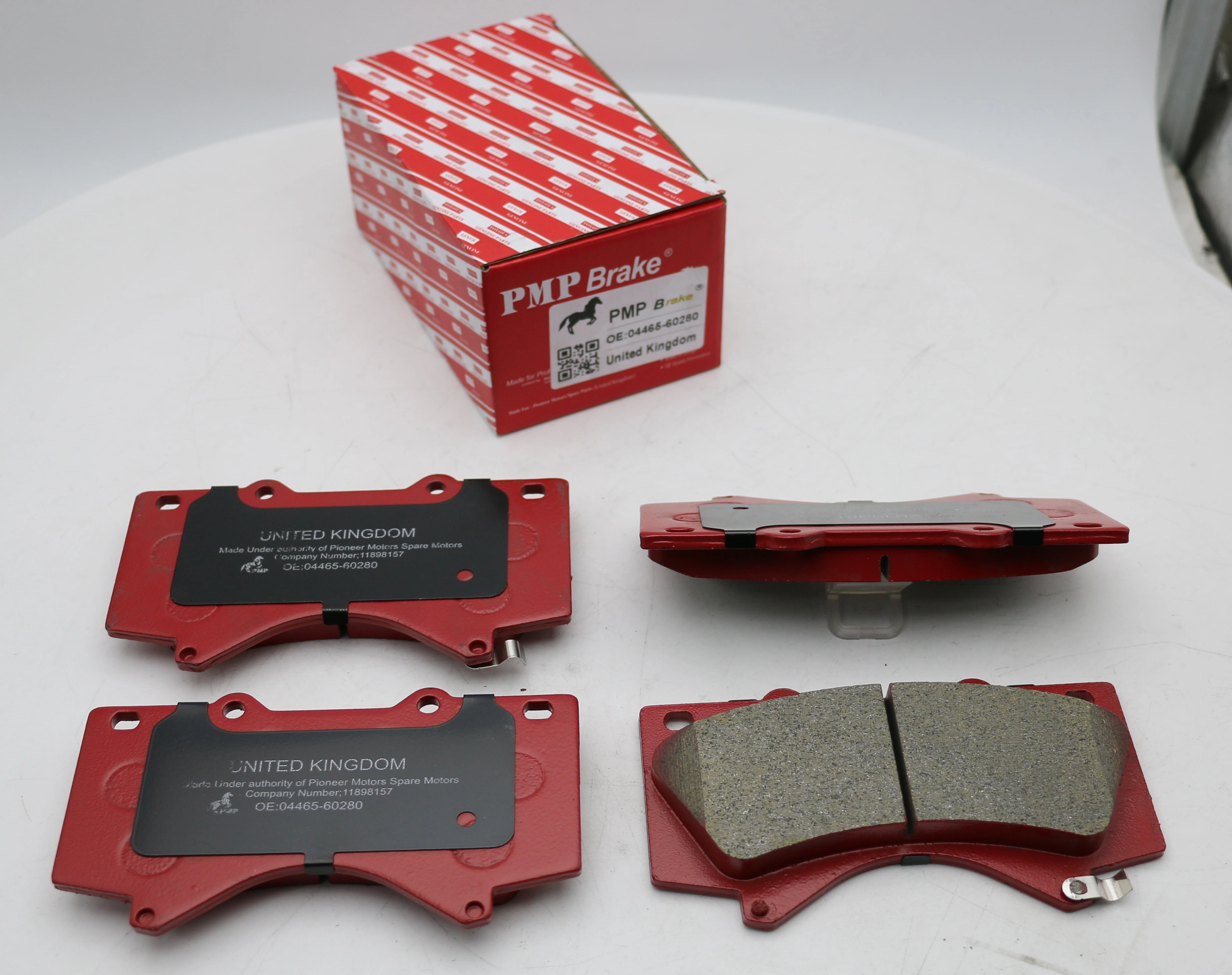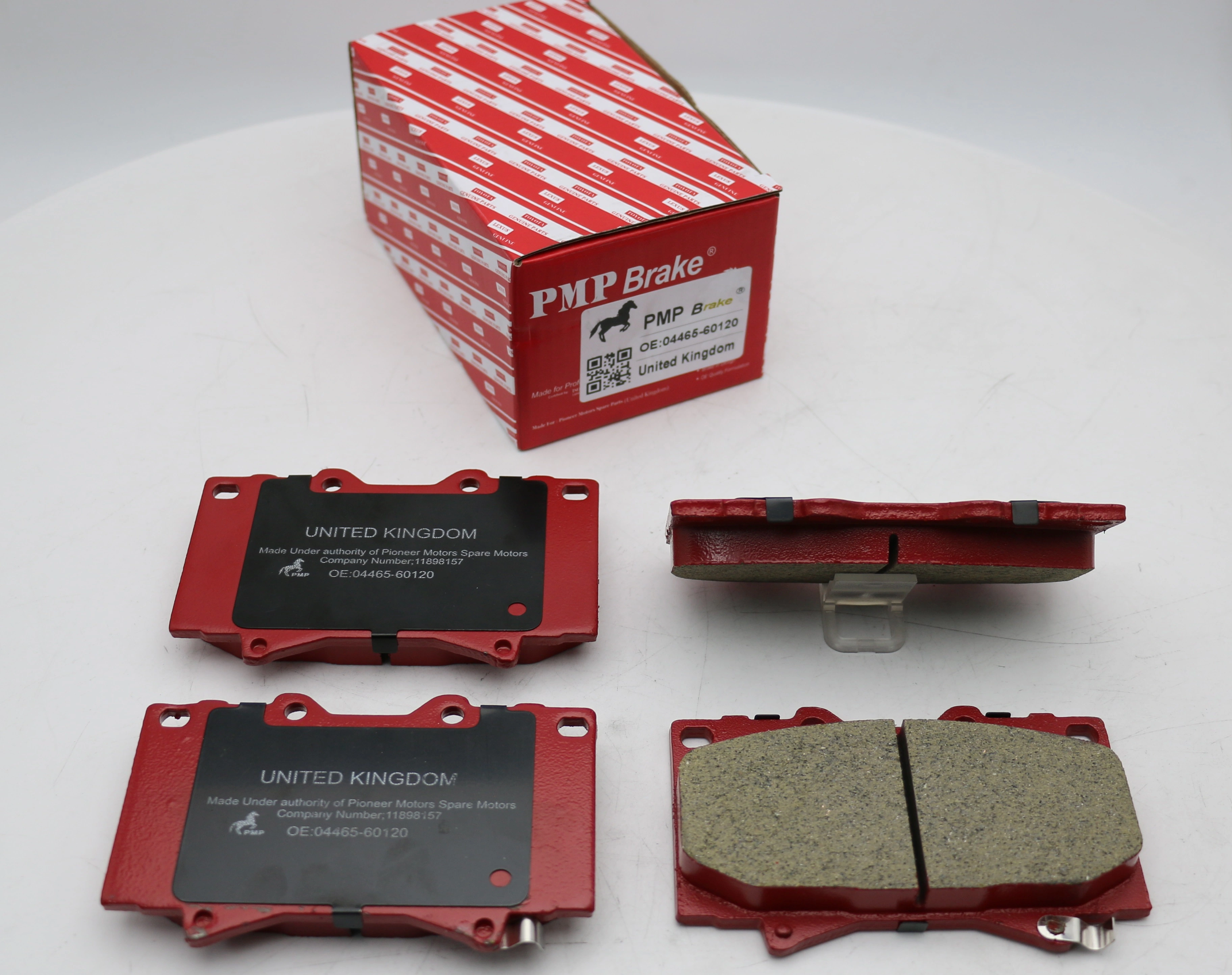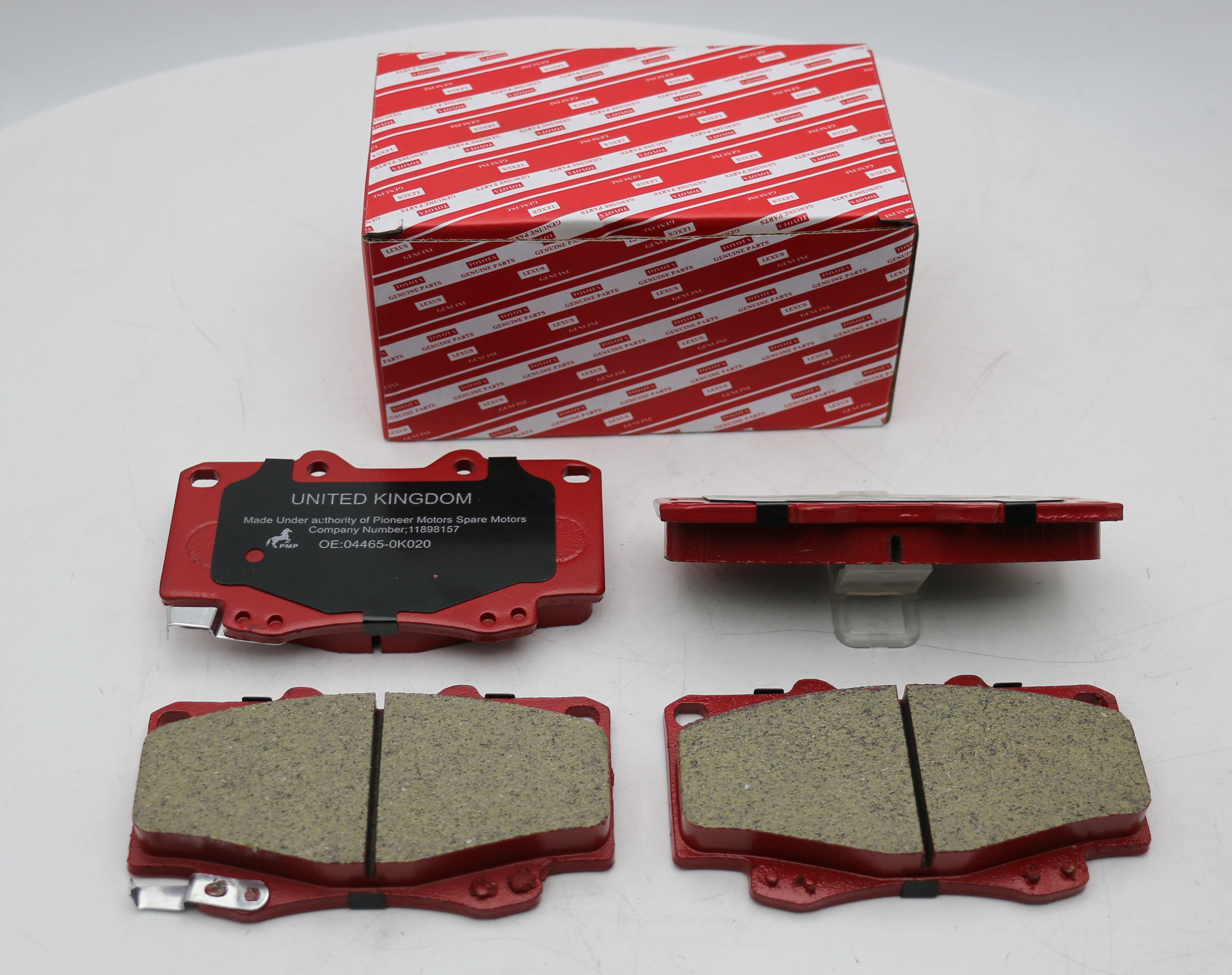What are semi-metallic brake pads and how are they made
Semi-metallic brake pads are composed of metal fibers such as steel, iron, and copper, combined with other materials like graphite and resin. These pads provide excellent heat resistance, friction performance, and long-lasting durability. Automotive workshops and vehicle owners trust semi-metallic brake pads for reliable braking in SUVs, trucks, performance vehicles, and commercial applications. UK-manufactured semi-metallic pads comply with global standards, ensuring consistent stopping power and reduced brake fade. By selecting semi-metallic brake pads, clients achieve safety, optimal performance, and dependable vehicle control across various driving conditions and demanding applications worldwide.
How do semi-metallic brake pads differ from ceramic brake pads
Semi-metallic brake pads differ from ceramic brake pads by offering superior heat dissipation and performance under high temperatures, whereas ceramic pads are quieter and produce less dust. Semi-metallic pads are ideal for trucks, SUVs, and performance vehicles needing reliable stopping power. UK-manufactured semi-metallic brake pads provide durability, friction consistency, and long service life. Automotive professionals and fleet managers prefer semi-metallic brake pads for heavy-duty applications, towing, off-road driving, and mountain terrains. Choosing semi-metallic brake pads ensures optimal braking performance, safety, and long-term efficiency while maintaining global compliance and high-quality standards.
Are semi-metallic brake pads suitable for daily driving vehicles
Yes, semi-metallic brake pads are suitable for daily driving vehicles, offering reliable braking under various conditions. UK-manufactured semi-metallic pads combine steel, copper, and resin to provide durability, friction consistency, and heat resistance. Automotive workshops and fleet operators choose these pads for SUVs, trucks, and performance vehicles. They maintain safety, reduce fade, and ensure optimal stopping power. Semi-metallic brake pads are ideal for daily commuting, towing, or off-road driving. By selecting semi-metallic brake pads, clients achieve long-lasting performance, dependable braking, and compliance with global safety standards while maintaining excellent efficiency in all driving conditions.
Do semi-metallic brake pads produce more noise compared to ceramic pads
Yes, semi-metallic brake pads can produce more noise compared to ceramic pads due to their metal content. UK-manufactured semi-metallic pads provide superior friction, heat resistance, and durability for SUVs, trucks, and performance vehicles. Automotive workshops and fleet operators rely on these brake pads for reliable stopping power under demanding conditions. The increased noise is balanced by enhanced braking performance, longer service life, and consistent friction. Semi-metallic brake pads are ideal for heavy-duty, towing, off-road, and high-performance applications. Choosing semi-metallic pads ensures safe braking, global standards compliance, and reliable vehicle control under all driving conditions.
Do semi-metallic brake pads wear out brake rotors faster than other types
Yes, semi-metallic brake pads can wear out brake rotors faster than ceramic or organic pads due to their harder composition. UK-manufactured semi-metallic pads combine steel, copper, and other materials for durability, friction efficiency, and heat resistance. Automotive workshops, fleet managers, and vehicle owners rely on these pads for SUVs, trucks, and high-performance vehicles. While rotor wear may be slightly higher, semi-metallic brake pads offer superior braking performance, reliability, and long service life. Choosing these pads ensures optimal vehicle control, safety, and compliance with global standards while maintaining consistent performance in demanding driving conditions worldwide.
Can semi-metallic brake pads handle high temperatures effectively
Yes, semi-metallic brake pads can handle high temperatures effectively, making them ideal for performance, towing, and heavy-duty vehicles. UK-manufactured semi-metallic pads combine metal fibers and friction materials for consistent braking, heat resistance, and long-term durability. Automotive workshops, fleet operators, and SUV owners trust these pads for reliable stopping power, reduced fade, and safety under extreme conditions. By choosing semi-metallic brake pads, clients ensure optimal vehicle performance, long-lasting operation, and global compliance with automotive standards. Semi-metallic pads are suitable for mountain driving, off-road vehicles, and high-performance applications requiring dependable braking efficiency.
Are semi-metallic brake pads more durable than organic brake pads
Yes, semi-metallic brake pads are more durable than organic brake pads, providing long-lasting friction performance and heat resistance. UK-manufactured semi-metallic pads combine steel, copper, and resins to maintain reliable stopping power for SUVs, trucks, performance, and commercial vehicles. Automotive workshops and fleet operators benefit from extended pad life, reduced fade, and consistent braking efficiency. By choosing semi-metallic brake pads, clients ensure global standards compliance, safety, and optimal vehicle control. These pads are ideal for heavy-duty applications, towing, off-road, and performance vehicles. Durability and reliability make semi-metallic brake pads the preferred choice worldwide.
Do semi-metallic brake pads produce more brake dust than other pads
Yes, semi-metallic brake pads typically produce more brake dust compared to ceramic pads. UK-manufactured semi-metallic pads provide superior friction, heat resistance, and durability for SUVs, trucks, and performance vehicles. Automotive workshops, fleet operators, and heavy-duty vehicle users rely on these brake pads for consistent stopping power and reliable performance. While dust production is higher, semi-metallic brake pads deliver long service life, reduced fade, and optimal braking efficiency. Clients choosing semi-metallic pads gain safe, reliable, and globally compliant braking solutions suitable for daily driving, towing, off-road, and high-performance applications worldwide.
Are semi-metallic brake pads suitable for towing vehicles
Yes, semi-metallic brake pads are suitable for towing vehicles, offering superior heat resistance, friction performance, and durability. UK-manufactured semi-metallic pads provide consistent stopping power for trucks, SUVs, and commercial vehicles under heavy loads. Fleet operators, towing companies, and SUV owners rely on these brake pads for safety, reduced fade, and long service life. By selecting semi-metallic brake pads for towing, clients ensure optimal braking efficiency, vehicle control, and compliance with global automotive standards. These pads are ideal for long-distance towing, mountainous terrains, and heavy-duty applications where reliability and safety are critical.
How long do semi-metallic brake pads typically last under normal use
Semi-metallic brake pads can last up to around 50,000 miles depending on driving conditions, vehicle type, and load. UK-manufactured semi-metallic pads provide consistent friction, heat resistance, and durability for SUVs, trucks, performance vehicles, and commercial fleets. Automotive workshops and fleet operators rely on these pads for safe, long-term operation. Regular inspection, proper bedding-in, and maintenance ensure extended service life. Choosing semi-metallic brake pads guarantees optimal braking efficiency, minimal fade, and reliable performance. Clients benefit from predictable stopping power, reduced replacement frequency, and compliance with global safety standards for various vehicles worldwide.
Are semi-metallic brake pads more expensive than organic pads
Semi-metallic brake pads are generally more expensive than organic pads but offer superior performance, heat resistance, and durability. UK-manufactured semi-metallic pads provide reliable stopping power, consistent friction, and long service life for SUVs, trucks, performance vehicles, and commercial fleets. Automotive workshops and fleet operators choose these pads for demanding applications, including towing, mountain driving, and off-road conditions. While upfront costs are higher, the long-term benefits include extended pad life, reduced brake fade, and optimal braking performance. Choosing semi-metallic brake pads ensures safety, efficiency, and global compliance for high-performance and heavy-duty vehicles worldwide.
Can semi-metallic brake pads be used in cold climates effectively
Yes, semi-metallic brake pads can be used in cold climates effectively, providing consistent friction, heat resistance, and durability. UK-manufactured pads ensure reliable stopping power for SUVs, trucks, performance vehicles, and commercial fleets during winter driving. Automotive workshops, fleet operators, and individual vehicle owners rely on semi-metallic brake pads for safe braking, reduced fade, and long-term performance. These pads maintain global standards compliance and provide dependable operation in snow, ice, and extreme cold conditions. Choosing semi-metallic brake pads for cold climates ensures optimal vehicle control, safety, and efficient braking performance across diverse winter driving scenarios worldwide.





